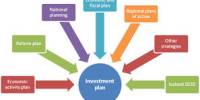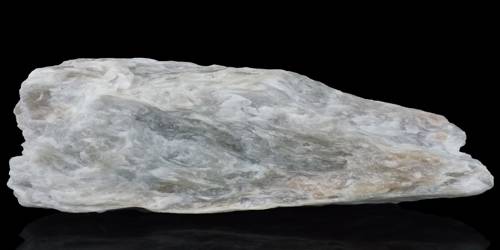Performance Evaluation Of Trust Bank Ltd:
Based on the Uniform Bank Performance Report (UBPR) framework, this chapter is an attempt to evaluate the performance of The Trust Bank Ltd. Some general observations of the performance of last five years (2005-2011) of the bank are as follows:
Growth in Different Businesses of TBL:
The Trust Bank has performed well in last seven years where there has been significant growth in different segments of the Bank. The overall performance of the Bank is discussed along with graphical presentation in the data analysis part of this report. Here growth for some of the different business of TBL is shown.
Growth in Assets:
Total assets of the bank (excluding contingent liabilities) have increased from TK.3153.04 million in 2005 to TK 30,382.22 million in 2011.
Asset Growths
2011 | 2010 | 2009 | 2008 | 2007 | 2006 | 2005 | |
Asset | 30,382.22 | 21060.77 | 14807.90 | 12060 | 7858.83 | 3424.33 | 3153.04 |
Source: Annual Report of TBL, 2005-2011
Asset Growth
|
Source: Bangladesh Bank Annual Report
Growth in Deposits:
Over the last seven years the deposit of the bank is increasing at a large rate. In the last seven years data we can see that the bank has collected deposits in different savings criteria. Among those the high cost fund that is in Fixed Deposits is larger than any other savings criteria.
Deposits
| Year | Current Deposits / Other A/c | Savings Deposits | Fixed Deposits | Deposits under Schemes | Total |
| 2005 | 240.81 | 105.72 | 1316.72 | 10.38 | 1673.63 |
| 2006 | 473.03 | 112.92 | 2707.37 | 64.5 | 3357.82 |
| 2007 | 917.68 | 228.6 | 3910.61 | 101.22 | 5158.11 |
| 2008 | 1219.14 | 365.39 | 5133.88 | 445.26 | 7163.67 |
| 2009 | 1630.32 | 597.31 | 9959.72 | 976.78 | 13164.13 |
| 2010 | 2207.72 | 1456.59 | 15198.95 | 1098.52 | 19961.78 |
| 2011 | 3550.79 | 2258.59 | 20947.34 | 1754.25 | 28510.97 |
Source: Annual Report of TBL, 2005-2009
Deposits Growth
|
Source: Bangladesh Bank Annual Report
Growth in Loans and Advances:
Loans and advances have increased to Tk. 18,682.16 million in 2011 than that of 1603.95 million in 2005. Import, export trade finance and working capital for industrial units were the major lending areas of the bank.
Loans and Advances
Category | 2005 | 2006 | 2007 | 2008 | 2009 | 2010 | 2011 |
Total Loans & Advances | 1603.95 | 1897.63 | 4358.31 | 6804.45 | 9738.32 | 13188.09 | 18682.16 |
Source: Annual Report of TBL, 2005-2011
Growth in Net Profit:
TBL’s increased operating efficiency and increased revenue both are the reason behind the growth in net profit.
Net Profits
| Year | 2005 | 2006 | 2007 | 2008 | 2009 | 2010 | 2011 |
| Net Profit | 25.96 | (140.16) | 68.14 | 175.98 | 121.29 | 263.16 | 239.03 |
Source: Annual Report of TBL, 2005-2011
Net Profit
|
Source: Bangladesh Bank Annual Report
Ratio Analysis:
In this section analysis has been made through UBPR. The following ratios indicate the profitability, efficiency or risks measures for the bank.
PROFITABILITY RATIO
Return On Assets (ROA):
Return on assets (ROA) is measured by the ratio of net income and total assets. By the returning assets, if the bank’s net income increases the profitable ratios of the bank increases. Also by measuring the ROA, it can be determined that what percentage of the total asset is the net income i.e. how much return are they getting over the assets. TBL is giving continued emphasis on quality assets, which resulted in providing a sound asset base for the bank.
Return on Asset
2011 | 2010 | 2009 | 2008 | 2007 | 2006 | 2005 | |
Return on Asset | 0.79% | 1.24% | 2.24% | -3.56% | 1.13% | 1.79% | 0.82% |
Source: Annual Report of TBL, 2005-2011 Return on Asset
|
Source: Bangladesh Bank Annual Report
Return On Equity (ROE):
Return on Equity (ROE) represents earning after tax over equity. The ROE (net income divided by equity capital) is the most important measurement of banking returns as well as a company’s returns because it is influenced by how well the bank has performed on all other categories and indicates whether a bank can compete for private sources of capital in the economy. The higher the ROE, the better for the bank, as they are getting higher amount of net income over the equity. The Trust Bank Ltd. has maintained significantly high ROE throughout the years of its operations. In 2011 the ROE dropped to 14.45% from 24.51% in 2010 due to increase in no. of shares.
Return on Equity
| 2011 | 2010 | 2009 | 2008 | 2007 | 2006 | 2005 |
Return on Equity | 14.45% | 24.51% | 20.30% | 19.62% | 30.79% | 19.03% | 4.03% |
Source: Annual Report of TBL, 2005-2011
Return on Equity
|
Source: Bangladesh Bank Annual Report
Export:
The export earning of the TBL from the export related services has increased to 4224 million in 2011 from Tk 22.60 million in 2005.
Export
| 2005 | 2006 | 2007 | 2008 | 2009 | 2010 | 2011 |
Export in million Taka | 22.60 | 71.10 | 2761 | 2636 | 2911 | 2884 | 4224 |
Source: Annual Report of TBL, 2005-2011
EXPORT
The following graph shows the growth in export earning.
|
Source: Bangladesh Bank Annual Report
IMPORT:
The import earning of the TBL from the import related services has increased to Tk 17,683.17 million in 2011 from Tk 625.90 million in 2005.
IMPORT
| 2005 | 2006 | 2007 | 2008 | 2009 | 2010 | 2011 |
IMPORT | 625.90 | 1349.20 | 327 | 8542 | 9746 | 11483 | 17683.17 |
Source: Annual Report of TBL, 2005-2011
IMPORT
Source: Bangladesh Bank Annual Report
FOREIGN REMITTANCE
The foreign remittance of the TBL is increased to TK. 2612 million in 2011 from Tk 765 million in 2010. This indicates a 241% increase in foreign exchange performance from the previous year. The following graph shows the growth in the foreign remittance:
Foreign remittance
| 2005 | 2006 | 2007 | 2008 | 2009 | 2010 | 2011 |
foreign remittance | 22 | 46 | 151.30 | 96 | 279 | 765 | 2612 |
Source: Annual Report of TBL, 2005-2011
Foreign remittance
|
Source: Bangladesh Bank Annual Report
Credit Deposit Ratio
Credit Deposit ratio is used to examine to what extent distributive efficiency effects good profitability. If advance increase and if it can be deployed in profitable ends it will increase the profitability.
Credit Deposit Ratio
| 2011 | 2010 | 2009 | 2008 | 2007 | 2006 | 2005 |
Credit Deposit Ratio | 68.93% | 69.46% | 76.65% | 73.04% | 67.21% | 63.44% | 62.81% |
Source: Annual Report of TBL, 2005-2011
Credit Deposit Ratio
|
Source: Bangladesh Bank Annual Report
Loan Ratio:
The loan ratio indicates the extent to which assets are devoted to loans as opposed to other assets, including cash, securities and plant and equipment.
The higher Net loan ratio is a better indicator for any bank. Over the last seven years the bank’s loan ratio has increased at a significant rate. It indicates all the assets of the banks are performing well.
Loan ratio
| 2005 | 2006 | 2007 | 2008 | 2009 | 2010 | 2011 |
Loan Ratio | 43.53% | 58.93% | 55.45% | 56.42% | 65.87% | 70.87% | 61.49% |
Source: Annual Report of TBL, 2005-2011
|
Source: Bangladesh Bank Annual Report
Performance at a Glance
Taka in Million
| Particulars | 2005 | 2006 | 2007 | 2008 | 2009 | 2010 | 2011 |
| Authorized capital | 1000 | 1000 | 1000 | 2004 | 2004 | 2004 | 2004 |
| Paid up Capital | 250 | 350 | 350 | 500 | 500 | 500 | 1666.67 |
| Share money Deposit | – | – | 150 | 200 | 200 | 200 | – |
| Statutory Reserve | 10.98 | 10.98 | 24.60 | 67.88 | 112 | 214.67 | 330.63 |
| Retained Earnings | 15.34 | -124.82 | -70.30 | 102.81 | 173 | 240.32 | 362.25 |
| Total Shareholders Equity | 276.32 | 236.16 | 454.30 | 870.69 | 991.97 | 1154.99 | 2154.29 |
| Deposit | 2553.72 | 2991.19 | 4483.26 | 9315.18 | 12705 | 18985.95 | 27101.59 |
| Loans and Advances | 1603.95 | 1897.63 | 4358.31 | 6804.45 | 9738.32 | 13188.09 | 18682.16 |
| Import | 625.90 | 1349.20 | 2761.00 | 5628.20 | 7592.50 | 11483 | 17683.17 |
| Export | 22.60 | 71.10 | 326.60 | 930.20 | 2072.40 | 2884 | 4224.55 |
| Foreign Remittance | 22 | 46 | 151.30 | 197.90 | 279 | 765 | 2612 |
| Investment | 363.11 | 493.19 | 1896.92 | 3220.78 | 2448 | 3122.81 | 3785.45 |
| Total Assets | 3153.04 | 3424.33 | 7858.83 | 12060 | 14807.90 | 21060.77 | 30382.22 |
| Total Income | 235.03 | 347.10 | 535.49 | 1046.36 | 1444.60 | 844.18 | 1328.03 |
| Total Expenses | 164.29 | 469.03 | 447.06 | 782.09 | 1148.33 | 297.28 | 474.31 |
| Operating Profit | 70.74 | -121.93 | 88.43 | 264.27 | 288 | 546.89 | 853.71 |
| Total provision | 16.48 | 18.23 | 20.29 | 47.89 | 178 | 39.2 | 273.94 |
| Profit Before Tax | 54.26 | -140.14 | 68.14 | 216.38 | 226.29 | 507.69 | 579.77 |
| Provision for Tax | 28.30 | – | – | – | 105 | 244.54 | 340.74 |
| Net Profit (After Tax) | 25.96 | -140.16 | 68.14 | 216.38 | 114 | 263.15 | 239.02 |
| Return on Equity | 25.60% | 20.54% | 19.47% | 26.56% | 13.02% | 24.51% | 14.45% |
| Return on Assets | 2.24% | -3.56% | 1.13% | 1.79% | .82% | 1.24% | 0.79% |
| Credit-Deposit Ratio | 62.81% | 63.44% | 97.21% | 73.04% | 73.65% | 69.46% | 68.93% |
| Earning per Share | 103.86 | -532.63 | 194.70 | 44.18 | 24.26 | 52.54 | 28.28 |
| No. of Employees | 124 | 138 | 209 | 273 | 359 | 508 | 842 |
| Number of Branches | 10 | 11 | 13 | 15 | 18 | 26 | 31 |
| Cost of Fund % | – | – | – | 9.30 | 9.23 | 8.28 | 8.43 |
SWOT Analysis
SWOT analysis plays a significant part in any company. Any company has some internal strengths and weaknesses, with some external opportunities and threats. Internal factors can be better controlled than external factor as companies do not have any control over it. To survive in the changing environment any company needs to know or be aware of what are its strengths, weaknesses, opportunities and threats so that it take advantages of its strengths and opportunities to eliminate or decrease its weaknesses and threats. In short, SWOT analysis helps to identify what are the capabilities and capacities of a company.
SWOT Matrix
Strength: A company should be aware of its core capabilities and sources of competitive advantages. Core capabilities are the critical skills and processes that an organization executes so well that its reputation builds around it.
Weaknesses: In addition to knowing its strengths, an organization must recognize its limitations. Whether limited by a poorly equipped production facility or a sales force that merely quotes prices and delivery dates, a business that acknowledge its weaknesses forces mangers to assess their processes and systems.
Opportunities: External and internal environments present both driving and restraining forces. Opportunities may occur suddenly. With the past pace of globalization and technology changes, what may initially present itself as an opportunity may become a threat if organizational responsiveness is too slow or not well planned.
Threats: Threats are negative external environmental factors which influences an organization’s decision. External factors are not controlled by the organization and to survive every organization needs to be very alert about its threats and how they can overcome this problem. Organizations should be proactive rather than reactive and should be aware of what are the competitors’ moves and should take necessary action in advance to face those moves.
Strengths
1. Top Management:
The top management of the bank, the key strength for The Trust Bank has contributed heavily towards the growth and development of the bank. The top management officials are army’s highest position holder, so they have a good idea about the current situation.
2. Company Reputation:
The Trust Bank has created a good reputation in the banking industry of the country. Their main customers are army persons. The popularity of this bank is increase day by day also in the general public area.
3. Sponsors:
The Trust Bank has founded by The Army Welfare Trust. The main sponsors for this bank is Sena Kalyan Sangstha. The chairperson of this bank is Chief of Army Staff and directors are also appointed by the sangstha, that’s why the sponsor does not have any problem for the fund.
4. Modern Facilities and Computer:
From the very beginning The Trust Bank tries to furnish their work surroundings with modern equipment and facilities. For speedy service to the customer, The Trust Bank had installed money-counting machine in the teller counter. The bank has computerized banking operation under software called PC banking. More over computer printed statements are available to internal use and occasionally for the customers. The Trust Bank is equipped with telex and fax facilities.
5. Stirring Branches:
From the formative stage of The Trust Bank tried to furnish their branches by the impressive style. Their well-decorated branches gets attention of the potential customer, this is one kind of positioning strategy. The Sena Kalyan Bhaban Branch is also impressive and is comparable of foreign banks
6. Interactive Corporate Culture:
The corporate culture of The Trust Bank is very much interactive compare to other local organization. This interactive environment encourages the employee to work attentively. Science the banking jobs is very much routine work oriented and lovely environment boots up the work capability of the employees.
Weaknesses
1. Limitation of Information System (Flora Bank):
Flora bank is not comprehensive banking software. It is desirable that a more comprehensive banking system should replace PC bank system.
2. Hierarchy Problem:
The hierarchy problem treated as a weakness for The Trust Bank, because the employee will not stay for a long. So there will be a chance of brain drain from this bank to other bank.
3. Advertisement Problem:
There is another weakness for The Trust Bank is advertisement. Their media coverage is so much low that people do not know the bank thoroughl
Opportunities
1. Diversification:
The Trust Bank can pursue diversification strategy in expanding its current line of business. They do not serve not only the army but also the general people.
3.Business Banking
The investment potential of Bangladesh is foreign investors. So EBL has opportunity to expand in business banking.
Threats
1. Contemporary Banks:
The contemporary banks of The Trust Bank like: Dhaka Bank, Dutch Bangla Bank, National Bank, Mutual Trust Bank, Mercantile Bank are its major rivals. They are carrying out aggressive campaign to attract lucrative clients as well as big time depositors. The Trust Bank should remain vigilant about the steps taken by these banks, as these will in turn affect The Trust Bank strategies.
2. Multinational Bank:
The Rapid expansion of multinational bank poses a potential threat to new PCB’s. Due to the booming energy sector, more foreign banks are expected to operate in Bangladesh. Moreover, the existing foreign banks such as HSBC, AMEX, CITI N.A, and Standard Chattered Grindlays are now pursing an aggressive branch expansion strategy. Since the foreign banks have tremendous financial strength, it will pose a threat to local bank to a certain extant in terms of grabbing the lucrative clients.
3. Default Culture:
Default culture is very much familiar in our country. For a bank, it is very harmful. As The Trust Bank is new, it has not faced it seriously yet. However as the bank grows older it might become big problems
4. Recovery Performance:
The recovery percentage of the bank is very good. The recovery percentage of the bank is all-most 99.95% because the credit administration and monitoring of this bank is very good. This bank is monitoring and all the loans are sanction by the high authority whose are high officials of Bangladesh Army, so when they sanction the loan they do inquire on the party. There is another thing of high recovery that this bank is financed by the army welfare trust, so people whose are taking loan from this bank always think that this is an army bank so if I failed to pay then it will be a very big problem for me.
REFERENCE
- An Introduction to Research Method by Mr. Md. Kamal Hossain Sarker, First Edition: Fed, 2010
- Articles of Modern Banking System of TBL.
- Annual Report of TBL (2011)
- www. trust bank ltd.com
- www.google.com
















